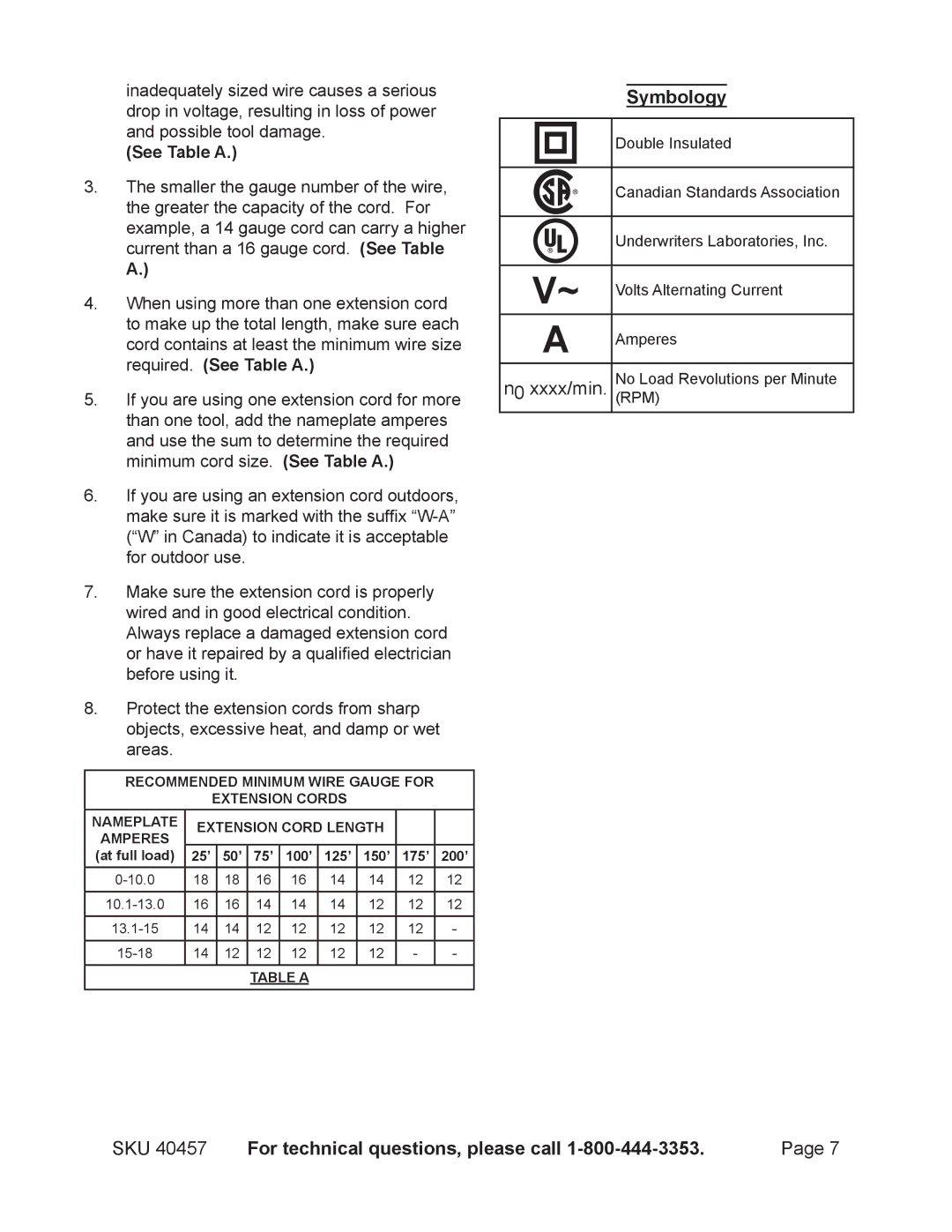
inadequately sized wire causes a serious drop in voltage, resulting in loss of power and possible tool damage.
(See Table A.)
3.The smaller the gauge number of the wire, the greater the capacity of the cord. For example, a 14 gauge cord can carry a higher current than a 16 gauge cord. (See Table
A.)
4.When using more than one extension cord to make up the total length, make sure each cord contains at least the minimum wire size required. (See Table A.)
5.If you are using one extension cord for more than one tool, add the nameplate amperes and use the sum to determine the required minimum cord size. (See Table A.)
6.If you are using an extension cord outdoors, make sure it is marked with the suffix
(“W” in Canada) to indicate it is acceptable for outdoor use.
7.Make sure the extension cord is properly wired and in good electrical condition. Always replace a damaged extension cord or have it repaired by a qualified electrician before using it.
8.Protect the extension cords from sharp objects, excessive heat, and damp or wet areas.
RECOMMENDED MINIMUM WIRE GAUGE FOR
EXTENSION CORDS
NAMEPLATE | EXTENSION CORD LENGTH |
|
| |||||
AMPERES |
|
| ||||||
|
|
|
|
|
|
|
| |
(at full load) | 25’ | 50’ | 75’ | 100’ | 125’ | 150’ | 175’ | 200’ |
18 | 18 | 16 | 16 | 14 | 14 | 12 | 12 | |
|
|
|
|
|
|
|
|
|
16 | 16 | 14 | 14 | 14 | 12 | 12 | 12 | |
|
|
|
|
|
|
|
|
|
14 | 14 | 12 | 12 | 12 | 12 | 12 | - | |
|
|
|
|
|
|
|
|
|
14 | 12 | 12 | 12 | 12 | 12 | - | - | |
|
|
|
|
|
|
|
|
|
TABLE A
Symbology
Double Insulated
| Canadian Standards Association |
|
|
| Underwriters Laboratories, Inc. |
|
|
V~ | Volts Alternating Current |
A | Amperes |
| |
|
|
n0 xxxx/min. | No Load Revolutions per Minute |
(RPM) |
SKU 40457 | For technical questions, please call | Page 7 |
